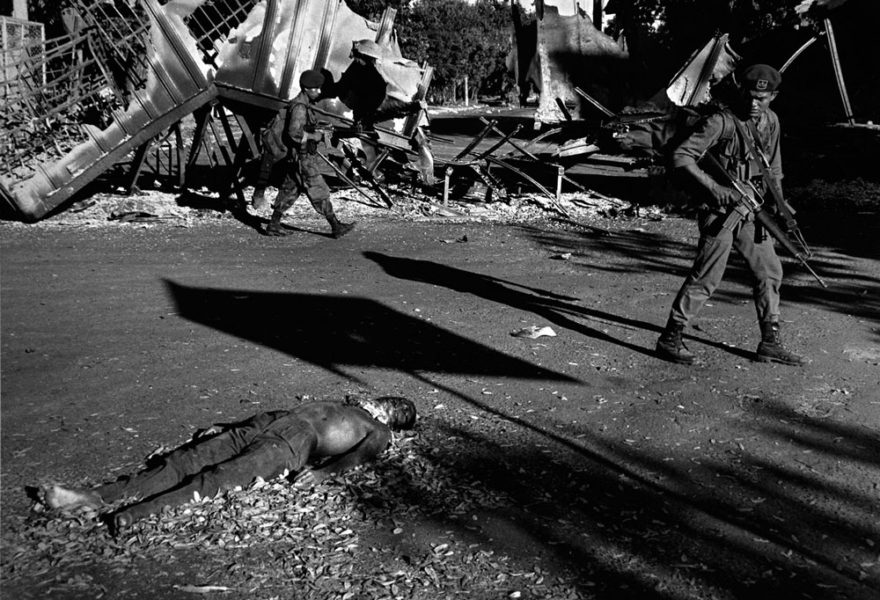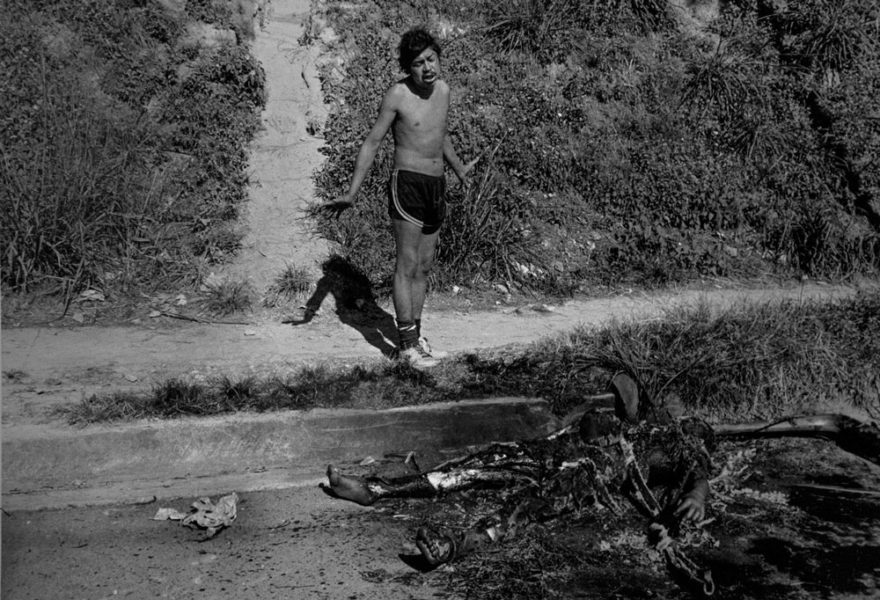El Salvador. The final offensive, 1989
In 1989 Antonio Turok participated in the so-called “Final Offensive” in El Salvador. He documented the ruins of the Mejicanos neighborhood, the workplace of the murdered Jesuit priests, the funerals, the taking of the Sheraton Hotel (where the representative of the oas, João Baena, and a group of armed marines were). He also documented, in the municipality of San Miguel, the presence of the Immediate Reaction Battalions (biri arce) created in 1983 by the Salvadoran regime with the support of the u.s..
Rural Context
“The land and land ownership, these are key issues in a state whose main products are coffee and cotton. An export market for these products soon spread also necessitated an early extension of the acreage in the second half of the last century. The benefits for coffee and cotton growers in El Salvador considerably expanded and found only an obstacle on the road to wealth and well-being: Indigenous people. The land the Indians work was the basis of livelihood for their families and communities village or tribe. It is understandable that they were not interested in selling their possessions to coffee and cotton growers”. (Neuberger y Opperskalski, 1983, 127)
Stagnation of conflict
“El Salvador is the scene of a civil war that began in 1979 and has claimed more than 57,000 lives, in their overwhelming majority noncombatant civilians. From the military point of view the war is projected indefinitely: the insurgents with about seven thousand troops in 1987 face 53,000 regular soldiers and neither side can impose its will on the opponent”. (Sohr, 1989, 83)
“The civil war was in a state of suspension, often referred to as a draw, in which both sides were unable to lunge decisive blows but able to mutually inflict heavy losses. From the government perspective the most successful ruling has been to prevent the rebels shift from guerrilla warfare to regular formations. The insurgents, meanwhile, have managed to transform a good portion of the country as ungovernable and are on the lookout to exploit the weaknesses of the regime”. (Sohr, 1989, 23)
Massacre at El Mozote
The press was especially timid and obsequious during the Reagan years… When journalist Raymond Bonner continued to report on the atrocities in El Salvador, and on the u.s. role, the New York Times removed him from his assignment. Back in 1981 Bonner had reported on the massacre of hundreds of civilians in the town of El Mozote, by a battalion of soldiers trained by the United States. The Reagan administration scoffed at the account, but in 1992, a team of forensic anthropologists began unearthing skeletons from the site of the massacre, most of them children; the following year a un commission confirmed the story of the massacre at El Mozote”. (Zinn, 2008)



